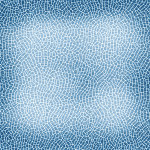In our modern era, the advancements in medicine are nothing short of astonishing. From revolutionary technologies in diagnostics to targeted therapies for a host of diseases, the medical field has made leaps and bounds in ensuring longer and healthier lives. But, despite these advancements, an increasing number of people are turning towards traditional healing practices. Why? Because they believe these practices offer a holistic approach to health and well-being that sometimes, modern medicine fails to provide. So, let’s explore how traditional healing practices can complement modern medicine in today’s world.
The Intersection of Tradition and Modernity
Before we delve into the specifics, it’s important to understand the defining characteristics of both traditional and modern medicine.
A lire aussi : How Can Interactive Fitness Games Promote Physical Activity Among Youth?
Traditional healing, often referred to as alternative, complementary or holistic medicine, encompasses a broad range of practices rooted in ancestral knowledge. These methods have been passed down through generations and utilize natural substances and holistic approaches to promote health and prevent illness. Examples of traditional healing practices include acupuncture, herbal medicine, massage therapy, Ayurveda, and traditional Chinese medicine.
On the other hand, modern medicine, also known as allopathic or western medicine, is based on scientific research and employs pharmaceuticals, surgery and other medical procedures to treat symptoms and diseases. It excels in acute care and emergency situations, thanks to its precision and quick-acting therapies.
En parallèle : Can Genetic Testing Provide Insight into Personalized Nutrition Plans?
While seemingly contrasting in their approach, traditional healing and modern medicine can intersect in a way that brings about the best of both worlds.
Enhancing Patient-Centered Care
One of the key areas where traditional healing practices complement modern medicine is in patient-centered care.
Patient-centered care is the practice of caring for patients in ways that are meaningful and valuable to the individual patient. It includes listening to, informing and involving patients in their care. In modern medical practices, the heavy reliance on technology and fast-paced environment often leads to depersonalized care.
Here’s where traditional healing practices play a significant role. These practices emphasize personhood, and view health as a dynamic state of balance involving physical, emotional, social and spiritual dimensions. In this context, the patient’s subjective experience of illness, the patient-therapist relationship and the therapeutic context are considered just as important as the physical ailment itself.
Thus, by integrating traditional healing practices, modern medicine can foster a more empathetic, personalized and holistic approach to patient care.
Managing Chronic Conditions
Another area where traditional healing practices prove beneficial is in the management of chronic conditions.
Chronic conditions like heart disease, diabetes, and arthritis are long-term health conditions that require regular management. Modern medicine provides effective treatments for these conditions. However, these treatments often focus on the physical symptoms and do not address the underlying cause of the ailment.
In contrast, traditional healing practices often focus on the root cause of illness, not just alleviating symptoms. They emphasize lifestyle modifications, diet, exercise, and mind-body practices that can help manage chronic conditions in the long-term.
For instance, yoga and mindfulness meditation, two practices rooted in ancient traditions, have shown promise in managing chronic pain and reducing stress. Likewise, traditional Chinese medicine and Ayurveda offer personalized dietary and lifestyle recommendations that can help manage chronic conditions. Therefore, integrating these practices into modern chronic disease management can provide a more comprehensive approach to patient care.
Preventing Disease and Promoting Wellness
Prevention is better than cure. This old adage holds true in the realm of health and wellness.
While modern medicine excels at diagnosing and treating diseases, it often falls short in promoting wellness and preventing disease. The reactive nature of modern medicine, which tends to focus more on treating symptoms and less on prevention, has led many to explore traditional healing practices.
Traditional healing practices, on the other hand, often emphasize disease prevention and health promotion. They advocate for healthy diets, regular physical activity, adequate sleep, stress management, and other lifestyle factors that contribute to overall wellness.
For instance, many traditional healing practices, such as herbal medicine, acupuncture, and Ayurveda, offer preventative care strategies that boost the immune system and promote overall wellness. By integrating these principles into modern medical practices, we can shift towards a more proactive, preventive approach to health.
Enhancing Therapeutic Outcomes
Lastly, traditional healing practices can enhance therapeutic outcomes when used alongside modern medicine.
Evidence from numerous studies suggest that certain traditional healing practices can enhance the efficacy of modern medical treatments. For example, acupuncture has been shown to reduce chemotherapy-induced nausea and vomiting in cancer patients. Likewise, yoga and meditation can enhance the effects of psychotherapy in patients with depression or anxiety disorders.
Moreover, traditional healing practices often focus on self-care and self-empowerment, equipping patients with tools they can use to enhance their own wellbeing. This not only complements the benefits of modern treatments but also instills a sense of autonomy and control in patients over their own health.
In conclusion, traditional healing practices and modern medicine do not have to be mutually exclusive. By embracing elements of both, we can foster a more holistic, patient-centered, and comprehensive approach to healthcare. The integration of traditional healing practices into modern medicine is not a regression to outdated methods, but a progressive step towards a more inclusive, effective, and sustainable health care system.
Encouraging Mind-Body Connection
One element that traditional healing practices emphasize is the mind-body connection, which is sometimes overlooked in modern medicine.
Traditional healing practices often stress the importance of the mind’s influence on the body. These practices believe that mental and emotional states can significantly impact physical health, and vice versa. For example, practices like mindfulness meditation and yoga promote mental calmness and stress reduction, which can lead to improved physical health.
Contrastingly, modern medicine primarily revolves around physical ailments and their direct treatments. While it is increasingly recognizing the influence of mental health on physical conditions, this holistic approach is not yet universally incorporated.
By integrating traditional healing practices into modern medicine, there can be a greater emphasis on the mind-body connection. For instance, offering mindfulness exercises to patients undergoing cancer treatments can help manage stress and improve their quality of life. Similarly, encouraging yoga for heart disease patients can help control high blood pressure and reduce the risk of heart attacks.
Through such integration, the gap between mind and body in healthcare can be bridged, leading to a more effective and comprehensive approach to treatment and prevention of diseases.
The Future of Integrated Medicine
As we move forward, the importance of integrating traditional healing practices with modern medicine is becoming increasingly evident. This amalgamation not only offers a more holistic approach to healthcare but also recognizes and respects cultural diversity and traditions.
Researchers are continually studying the effects of traditional practices like acupuncture, yoga, herbal medicine, and others on various health conditions. The findings from these studies are encouraging, showing positive impacts on a variety of health issues.
Moreover, many medical institutions are beginning to incorporate traditional healing practices into their curriculum, signaling a shift towards a more integrative approach to healthcare.
The future of medicine lies in this integration. By blending the scientific precision of modern medicine with the holistic wisdom of traditional healing practices, we can create a healthcare system that is efficient, patient-centered, and respectful of cultural diversity.
Conclusion
In conclusion, it is becoming increasingly clear that traditional healing practices have a significant role to play in complementing modern medicine. Whether it is in creating a more patient-centered care, managing chronic conditions, preventing disease, promoting wellness, enhancing therapeutic outcomes, or encouraging the mind-body connection, traditional healing practices are proving to be an invaluable resource.
There is a growing realization that health is more than just the absence of disease. It is a state of complete physical, mental, and social well-being. And this holistic view of health is what traditional healing practices champion.
The integration of traditional healing practices into modern medicine is not just about the coexistence of two different approaches. It is about the creation of a new paradigm that combines the best of both worlds – the scientific rigor of modern medicine and the holistic wisdom of traditional healing practices.
As we move forward, let us embrace this integration, for it promises a healthcare system that is not only more effective and comprehensive but also more humanistic and sustainable. Let us remember that in the diversity of healing practices lies the potential for a more inclusive and holistic approach to health.











